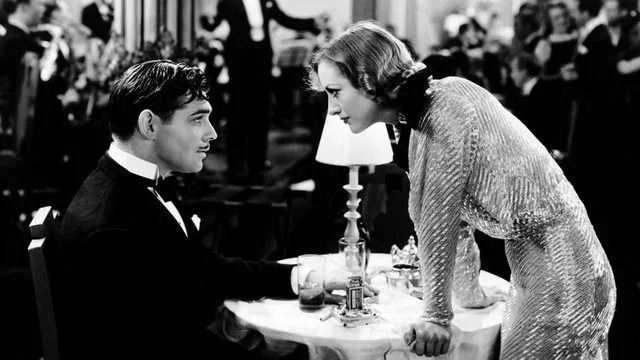 |
| Joan Crawford and Anita Page in Our Modern Maidens |
Cedric Gibbons got a lot of credit for designs he didn't do: His name was listed as art director on almost all of MGM's movies from 1925, when he joined the studio, through 1956, when he retired, but largely because he was head of the art department; the actual hands-on design work on any given film was probably that of the person listed along with Gibbons, usually as assistant art director. That said, I think it's almost a sure thing that the set designs for Our Modern Maidens were done by Gibbons himself: The giveaway is that they're a splendidly, almost over-the-top art deco, a style associated with Gibbons, which influenced even his most famous design: the Oscar statuette. The décor of B. Bickering Brown's mansion is a fabulous assemblage of deco staircases, columns, cornices, and whatnots, an almost cubist setting for Billie Brown (Joan Crawford) to sashay about in, wearing designs by Adrian. The truth is, the movie needs the boost it gets from the design, given that the story is a fairly banal account of modern maidens Billie and Kentucky (Anita Page) in dangerous liaisons designed to point the moral: Don't get too modern when it comes to sex. Billie, who has her fling at several wild parties, gets secretly engaged to Gil (Douglas Fairbanks Jr.), who has a little thing going with Kentucky, but when Billie meets Glenn Abbott (Rod La Rocque), things get complicated. She flirts with Abbott, who has connections in the state department, to get Gil posted to the embassy in Paris, but breaks off with Abbott when he gets a little too hot and bothered. Then, on her wedding day, she learns that Kentucky is pregnant with Gil's child, and she realizes that she really loves Abbott. Not to worry, he'll forgive her. This was Crawford's last silent film, and it's not entirely silent: Leo roars over the MGM logo, there's a music soundtrack, some sound effects and crowd noises, and once we hear a public announcement over a loudspeaker. It's not quite as entertaining as the movie to which it's a sequel, Harry Beaumont's 1928 Our Dancing Daughters, which also starred Crawford and Page, but it holds the eye if not the mind.































